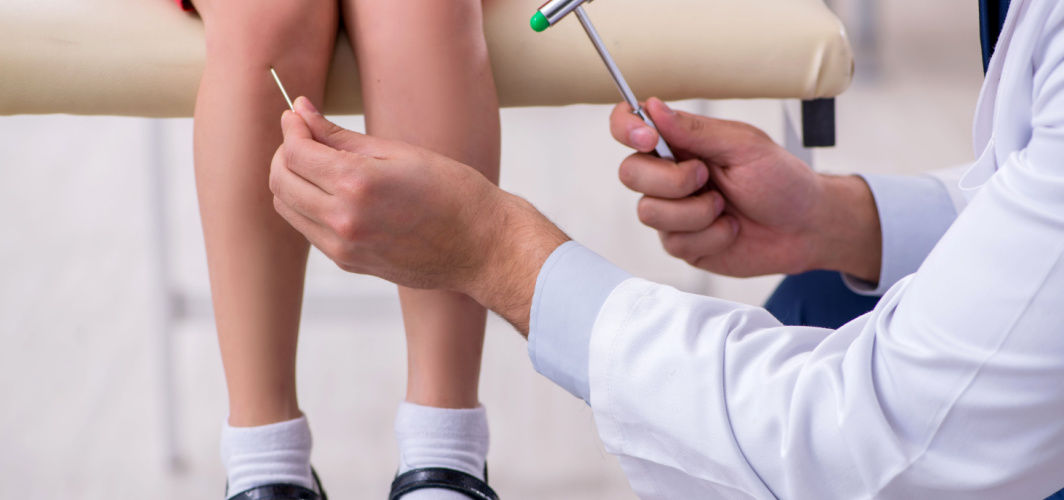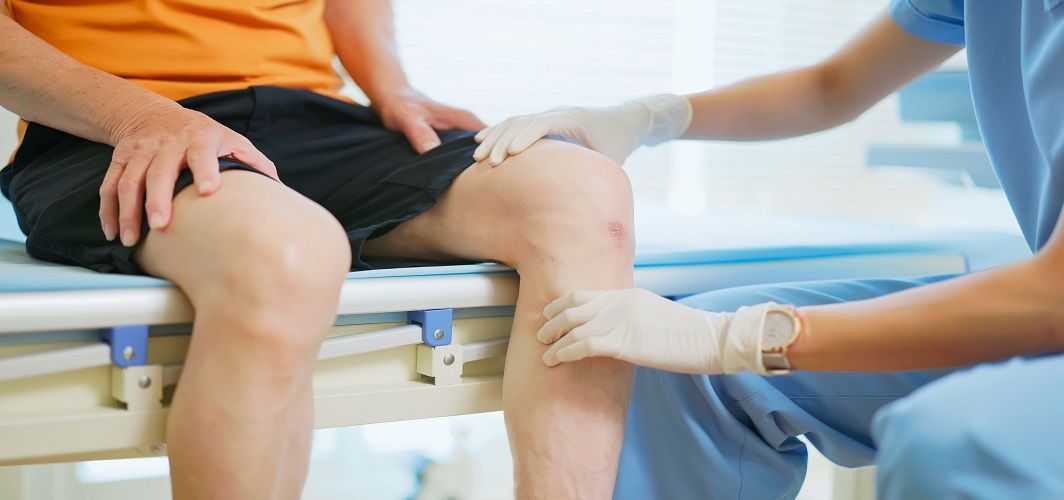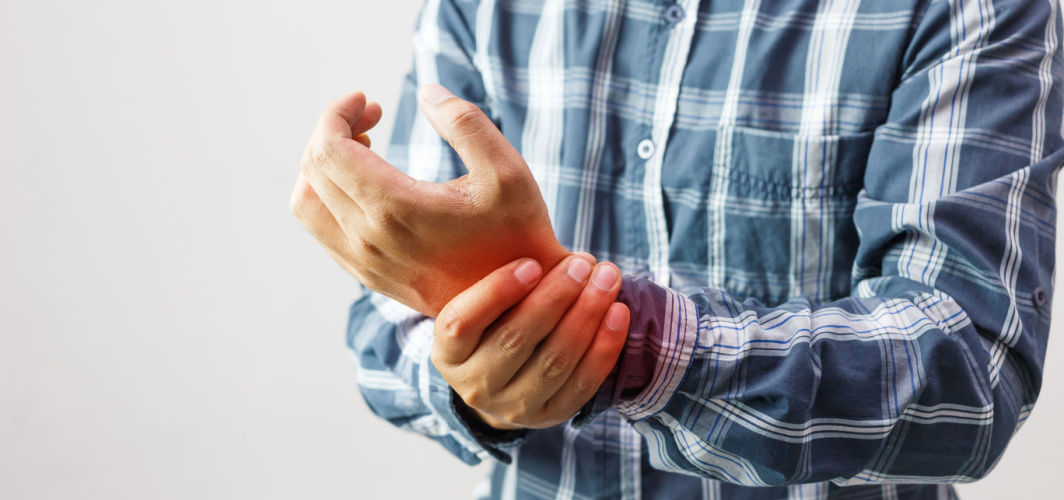Orthopedic Conditions
Knock Knee Correction: Understanding Causes, Symptoms, and Treatment Options
7 min read
By Apollo 24|7, Published on - 29 September 2023
Share this article
0
0 like

Knock knee is a common orthopaedic deformity that affects the alignment of the lower limbs, specifically the knees. Individuals with severe knock knee may have difficulty walking, running or climbing stairs. In India, the prevalence of knock-knee is relatively high, with a notable percentage of children and adults affected. The reasons for this high prevalence may include genetic factors, nutritional deficiencies, and variations in lifestyle. In this article, we will discuss the causes, symptoms, diagnosis, and treatment of knock-knee.
What is Knock-knee?
Knock knee, also known as genu valgum, is a condition where the knees are angled inward and touch each other when the legs are straightened. This means that there is a gap between the ankles and the feet when standing. Knock knee is different from normal leg alignment, where the knees are slightly apart and the ankles and feet are aligned.
1. Causes of Knock-knee
Knock knee can have various causes, depending on the age and health of the person. Some of the common causes are:
- Genetic Factors and Family History: Some people may inherit knock-knee from their parents or relatives. Some people may inherit a bone structure that predisposes them to develop a knock-knee.
- Developmental Issues During Childhood: Knock-knees can develop during the growth spurt of children, especially between the ages of 3 and 6. This is usually normal and corrects itself as the child grows older. However, in some cases, knock knee may persist or worsen over time.
- Conditions contributing to Knock-knee: Certain medical conditions or nutritional deficiencies can affect the development and strength of the bones and joints in the legs. For example, rickets, which are caused by a lack of vitamin D and calcium, can lead to softening and bending of the bones.
Potential Symptoms of Knock-knee
To recognise the symptoms of knock-knee, it's important to be observant and aware of both visible signs and associated symptoms and complications. Some of the symptoms to look out for include the following.
1. Visible Signs of Knock-knee
One of the most apparent signs of knock-knee is the misalignment of the lower limbs, particularly when a person stands or walks. To assess leg alignment:
- Ask the individual to stand with their feet together and their knees touching. If there is a noticeable gap between the knees or if the knees touch while the ankles remain apart, this could be a sign of a knock-knee.
- Observe the individual's leg alignment from the front and back. Knock-knee is characterised by an inward angulation of the knees when viewed from the front.
2. Associated Symptoms and Complications
In addition to the visible signs, individuals with knock knee may experience the following symptoms and complications:
- Pain or Discomfort: Knock-knee can cause uneven pressure distribution on the joints, leading to pain or discomfort in the knees, hips, or ankles. This pain may be aggravated by physical activity or prolonged standing.
- Difficulty with Balance and Coordination: The misalignment of the legs can affect balance and coordination, making it challenging for individuals with knock-knee to maintain stability while walking or engaging in physical activities.
- Impact on Posture and Gait: Knock knee can result in an altered posture and gait. Individuals may have an outward rotation of the feet, and their knees may come into contact during walking, affecting their overall gait pattern.
Diagnosing Knock-knee
Diagnosing knock-knee involves a combination of physical examination, medical history assessment, and radiographic evaluation.
1. Physical Examination and Medical History
The initial step in diagnosing knock-knee involves a thorough physical examination conducted by an orthopaedic specialist. The doctor assesses:
- Leg alignment
- Joint motion
- Instability
- Gait
- Posture
They also inquire about family history, growth patterns, and symptoms like pain or discomfort.
2. Radiographic Evaluation
To confirm the diagnosis of knock knee and assess its severity, X-rays are commonly used. X-rays provide detailed images of the bones, allowing doctors to measure specific angles and assess the alignment of the lower limbs. These angles include the femorotibial angle and the mechanical leg axis.
Additional imaging like MRI or CT scans may be necessary for complex cases or to identify underlying conditions.
Treatment Options for Knock-knee
Treatment for knock knee varies depending on the severity of the condition and the presence of associated symptoms.
1. Non-surgical Interventions
For mild cases of knock knee, non-surgical interventions may help to improve the condition and prevent further damage. Some of the non-surgical interventions include:
- Observation and Monitoring: Observation and monitoring are recommended for children with mild knock knees with no associated symptoms. Regular follow-up appointments with a doctor or orthopaedic specialist are essential to track the condition's progression.
- Physical Therapy and Exercises: Physical therapy focuses on strengthening the muscles around the knees, hips, and ankles. These exercises can help improve joint stability and support. Stretching exercises aim to enhance flexibility and alignment of the lower limbs, potentially reducing the severity of knock knee.
2. Surgical Interventions
Surgical interventions are typically reserved for severe cases or when conservative measures do not provide adequate relief.
- Indications for Surgery: Knock knee correction surgery may be considered for severe cases that cause significant pain, functional limitations or psychological distress. It is usually done under general anaesthesia and may take several hours to complete.
- Surgical Procedures for Knock-knee Correction: Surgical bone realignment, known as osteotomy, is a common approach to fixing knock-knees. It involves cutting and repositioning the bones to achieve proper alignment. Various techniques can be used for knock knee correction, especially femoral osteotomy and tibial osteotomy, depending on the specific case and the surgeon's assessment.
In extremely rare cases, doctors recommend knee replacement surgery.
Post-Treatment Care and Prevention
After undergoing knock knee correction surgery, it is essential to follow post-treatment care guidelines to ensure a smooth recovery and minimise the risk of complications.
1. Rehabilitation and Recovery
One of the most important aspects of post-treatment care is rehabilitation and recovery. Following surgery, individuals may benefit from physical therapy exercises tailored to their specific needs. These exercises aid in:
- Healing
- Restoring mobility
- Strengthening muscles
Regular follow-up appointments with the orthopaedic specialist are crucial to monitor the healing process, assess the alignment of the lower limbs, and address any concerns or complications that may arise.
2. Lifestyle Modifications and Self-care
Adopting healthy lifestyle habits can significantly contribute to your recovery.
- Maintaining a healthy weight is essential for reducing stress on the joints, particularly the knees. Weight management can help prevent the recurrence of knock knee and alleviate strain on the lower limbs.
- Wearing supportive and well-fitting footwear can provide stability and reduce the risk of gait abnormalities. Proper shoes can help maintain proper lower limb alignment.
3. Preventive Measures
Another aspect of post-treatment care is preventive measures. This involves taking steps to prevent future fractures or bone problems. Some of these steps include:
- For children and adolescents, regular physical activity is crucial for promoting healthy bone development. Weight-bearing exercises and activities like running, jumping, and playing sports can help strengthen bones and support proper alignment.
- A diet rich in calcium is essential for maintaining strong bones. Encourage the consumption of calcium-rich foods such as milk, yoghurt, cheese, and leafy greens. Adequate vitamin D intake is also vital, and sunlight exposure helps the body produce this vitamin.
Conclusion
In conclusion, knock-knee is a condition where the knees angle inward, causing the lower legs to spread out. This can affect the alignment and stability of the legs, leading to pain, discomfort, and difficulty walking or running. While mild cases of knock knees may not require treatment, severe cases may benefit from corrective measures. It's important to consult with a healthcare professional or orthopaedic specialist who can assess your specific situation and provide appropriate guidance. By addressing knock knees, you can improve your overall leg function and reduce associated pain and discomfort.
Note: This blog is intended for informational purposes only and should not be substituted for medical advice. Consult a healthcare professional for an accurate diagnosis and personalised treatment plan.
Orthopedic Conditions
Consult Top Orthopaedicians
View AllFrequently Asked Questions
Can knock knees come back after knock knee correction surgery?
Can knock knees come back after knock knee correction surgery?
Are there any risks or complications associated with knock knee correction surgery?
Are there any risks or complications associated with knock knee correction surgery?
Can knock knee Correction Improve My Athletic Performance?
Can knock knee Correction Improve My Athletic Performance?
Is Knock Knee Correction Safe During Pregnancy?
Is Knock Knee Correction Safe During Pregnancy?
Can yoga or specific yoga poses help fix knock knee?
Can yoga or specific yoga poses help fix knock knee?
Leave Comment
Recommended for you

Orthopedic Conditions
Delay Ageing of Your Knees with These Expert Tips by Apollo’s Orthopaedician
Pain in the knee is one of the most common orthopaedic issues experienced by people as they age. Know what causes the knees to age faster and result in pain.

Orthopedic Conditions
Rheumatoid Arthritis (RA): Symptoms, Risk Factors, Diagnosis, Treatment & Complications
Rheumatoid arthritis (RA) is an autoimmune disease that causes joint pain, swelling, and stiffness. Discover the symptoms, risk factors, diagnostic methods, and potential complications associated with RA for effective management of the chronic health condition.

Orthopedic Conditions
Should You Worry If You Have Flat Feet?
While everyone has flat feet at birth which gradually arches, some people may continue having them due to genetic reasons or foot injuries.
Subscribe
Sign up for our free Health Library Daily Newsletter
Get doctor-approved health tips, news, and more.
Visual Stories

10 Foods That Are Unhealthy for Your Bones
Tap to continue exploring
Recommended for you

Orthopedic Conditions
Delay Ageing of Your Knees with These Expert Tips by Apollo’s Orthopaedician
Pain in the knee is one of the most common orthopaedic issues experienced by people as they age. Know what causes the knees to age faster and result in pain.

Orthopedic Conditions
Rheumatoid Arthritis (RA): Symptoms, Risk Factors, Diagnosis, Treatment & Complications
Rheumatoid arthritis (RA) is an autoimmune disease that causes joint pain, swelling, and stiffness. Discover the symptoms, risk factors, diagnostic methods, and potential complications associated with RA for effective management of the chronic health condition.

Orthopedic Conditions
Should You Worry If You Have Flat Feet?
While everyone has flat feet at birth which gradually arches, some people may continue having them due to genetic reasons or foot injuries.



